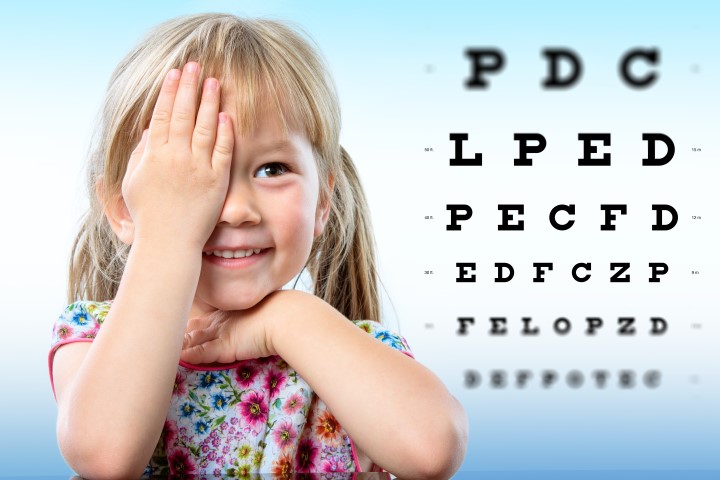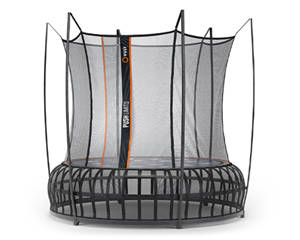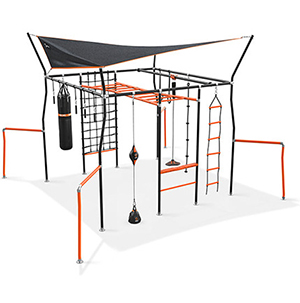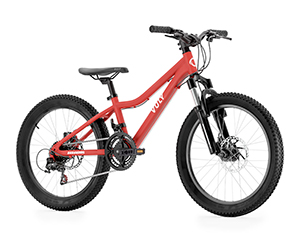Have you ever considered the fact that bouncing on a trampoline can help to improve someone's eyesight?
We all know about the fitness and enjoyment benefits of trampolining, but a little-known advantage is their ability to improve a child's ocular motor skills, which we know as our eyesight.
What are Ocular Motor Skills?
Essentially, ocular-motor skills (also known as ocular-motor control) can be defined as the eye's ability to locate and fixate on an object in the field of vision. This focus is the result of a smooth, coordinated movement of the eyes, to attend and follow objects and people.
To perceive objects clearly, the eyes must move in ways that let visual stimulation reach the optical receptors. If the eye is unable to track an object (or is unable to track it quickly), its reaction to stimuli will be skewed and the perception will be insufficient. While it is necessary for your child's growth and development, ocular-motor skills can prove to be difficult for some children.
Under Developed Ocular Motor Skills
Unfortunately, children with underdeveloped ocular motor and visual perception skills are at a disadvantage at school. They may have problems learning to read or write, as they cannot effectively focus their eyes on the required point. This might mean skipping lines of text, or easily losing their place when reading. Long-term sight issues can lead to problems in school and possible low attainment of literacy and education.
The challenges do not stop in the classroom. Children with poor ocular-motor skills frequently have problems performing simple tasks at home. They may find hand-eye coordination to be almost impossible, as they lack the ability to synchronise their body's reaction to their vision. A child may not be able to achieve simple tasks, such as catching a ball, which can lead to their exclusion during games and activities and lead to poor self-esteem.

How Can Trampolines Help?
- Fortunately, trampolines are fantastic tools for fostering sensory processing, as they foster full-body coordination and kinaesthetic awareness. The motion of the trampoline stimulates the vision receptors and is a wonderful way to foster your child's ocular-motor skills. The constant repositioning of the body actually strengthens the muscles in the eyes that are responsible for tracking objects.
- Rebounding on a trampoline requires the body to be repetitively in motion, so your child's eyes must continually adjust to the different fields of vision. As a result of this constant adjusting and reorientation, hand-eye-body coordination is greatly improved.
- As a parent, you can help improve your child's ocular-motor skills by getting them to use a trampoline.
- Before any official exercises begin, have your child jump on his or her trampoline to become comfortable with the motion. Because the child's perception differs from other children, this may take some time. Be patient, and positively encourage the child to continue to be relaxed on the trampoline.
Here are some of the most frequently cited exercises that we receive from our customers: - After the child is comfortable with the rebounding, ask them to try to stay in one place while jumping. This task forces the child to think about his or her orientation in the environment. A safety net will greatly decrease the chances of any injuries or falls, making the trampoline a safe, enjoyable environment for improving your child's sensory-motor skills.
- Once that skill has been perfected, ask your child to fix his or her eyes on you while bouncing. This may be more difficult because it's training the ocular muscles to become stronger and more reactive to the changing stimuli.
- If the child is successful in completing this task, you may choose to move one hand in the air and ask your child to follow the motion with his or her eyes. This is even more challenging because the eyes have to adjust to the up and down motion of the rebound and the changing position of the arm.
- Next, try slowly moving from one area to another and then come back (e.g. move three feet in one direction and slowly return to the place of origin). Do these exercises until you can move in larger distances (e.g. around the circumference of the trampoline) without your child's loss of focus. Focusing the eyes on you in a consistent, repetitive motion makes it easier for the eyes to adjust and react appropriately to the stimuli.
- As the child becomes more advanced with these basic skills, try to gradually increase the number of stimuli. For example, you could encourage the child to gently switch a beanbag between hands as he or she stands on the trampoline. This encourages hand-eye coordination.
- After that skill is perfected, ask the child to repeat that same motion while he or she lightly bounces on the trampoline. The child must still concentrate on changing the beanbag between his or her hands but now must also give attention to the rebounding motion of the trampoline.
- If that task is successful, instruct the child to lightly toss the beanbag between the hands. Count aloud how many times the beanbag is transferred without dropping. Variations on this method could include lightly transferring the beanbag between the hands while they are above his or her head.
- Finally, if the child's skills are improved, take the beanbag from your child and toss it to him or her. If he or she is successful in catching it, ask the child to throw it back to you. Audibly count the number of times that the beanbag is successfully tossed back and forth.
Be creative! Some suggestions may not be useful to your child, and they may need to be adjusted. Every child is different and different techniques can be adapted to best suit his or her individual needs. By improving your family's sensorimotor skills, you are giving them a gift that will last a lifetime.
Trampolines can be used as a fun, innovative teaching tool for children of all ages and skill levels. Vuly provides a wide range of top-quality trampolines and safety accessories to help your family rebound into good health.
Note: always supervise children while the trampoline is in use. These suggestions are based on customer feedback and are not intended to replace or substitute for any professional help.























































